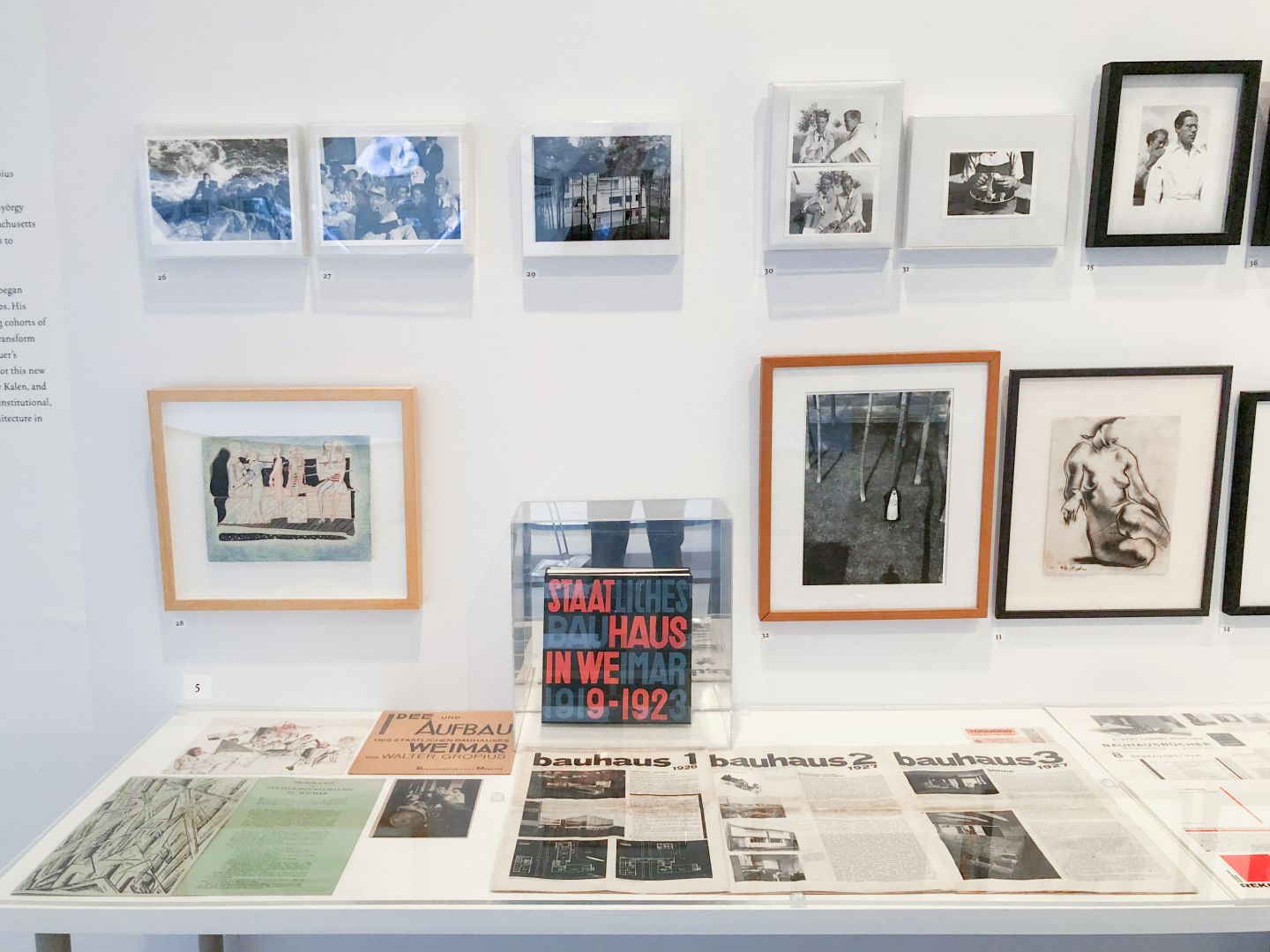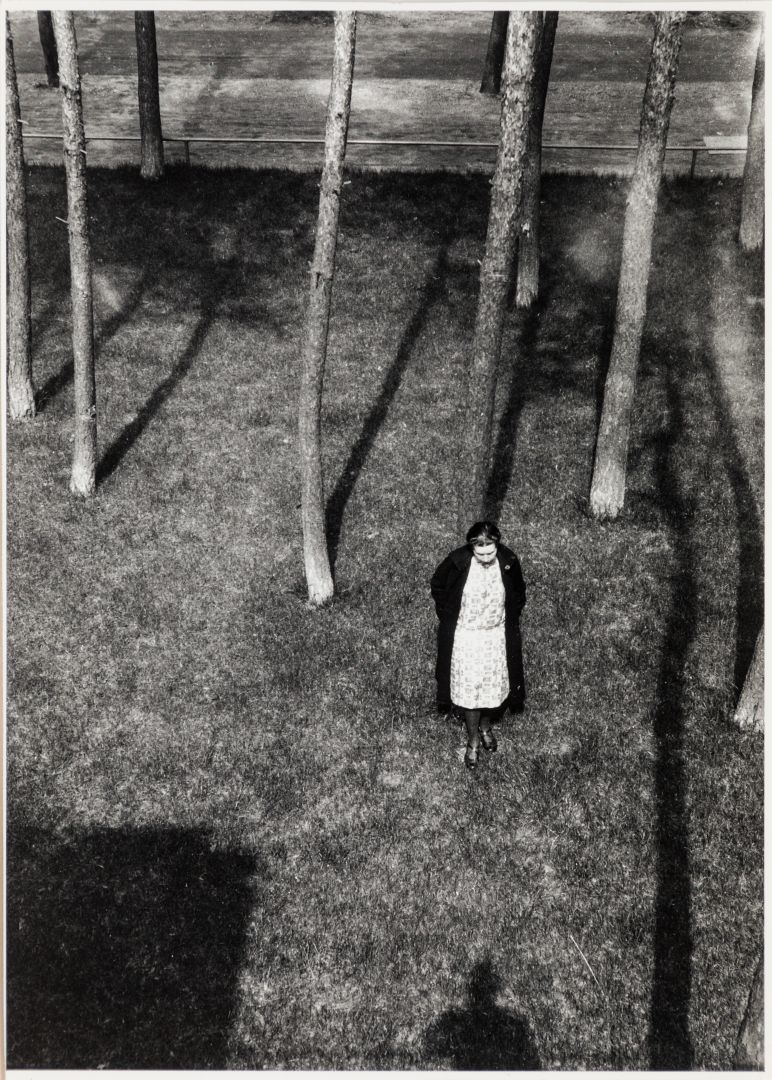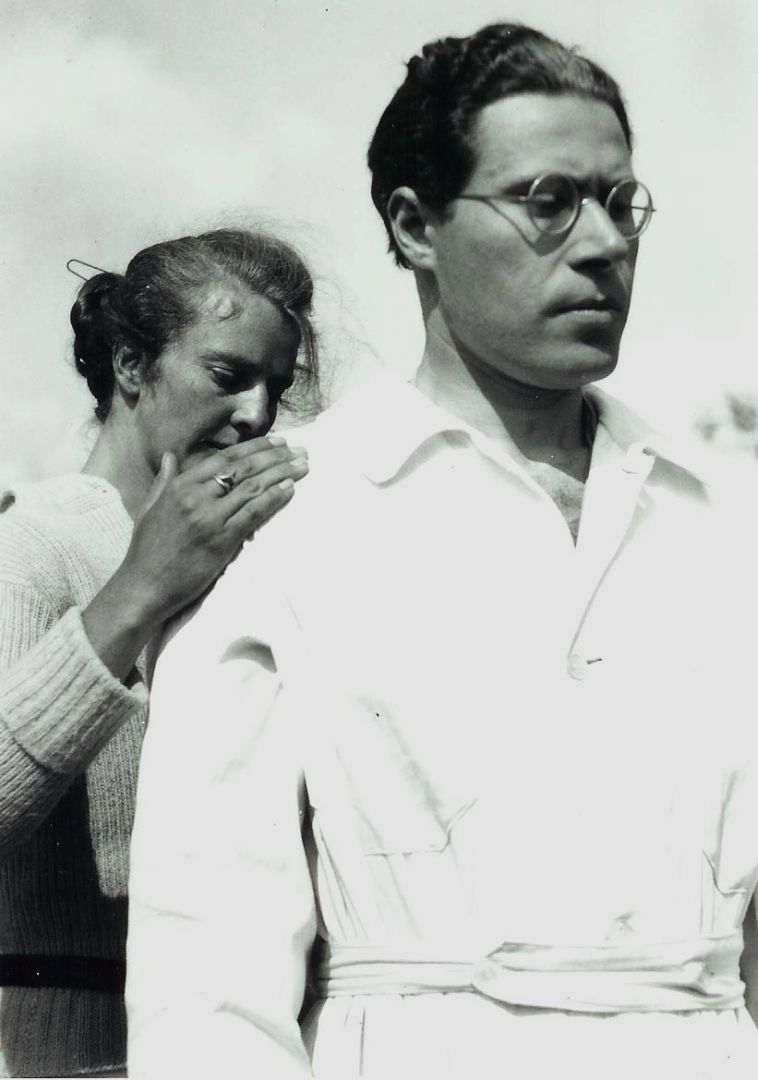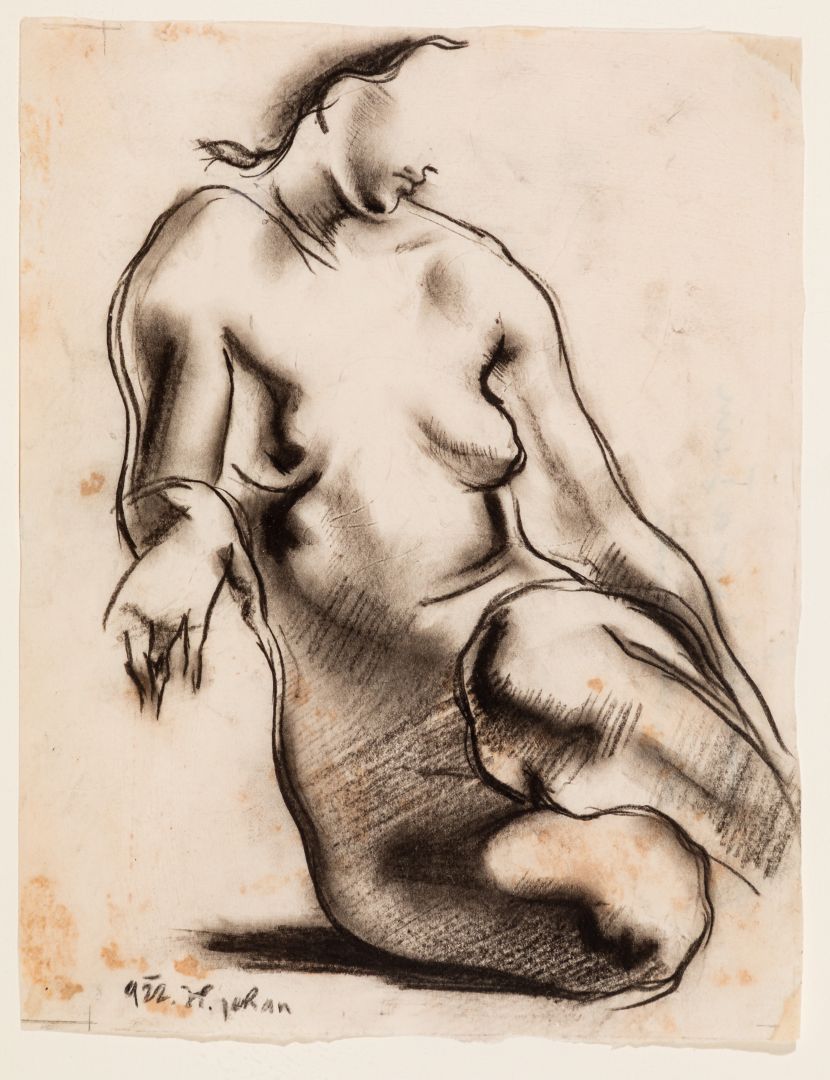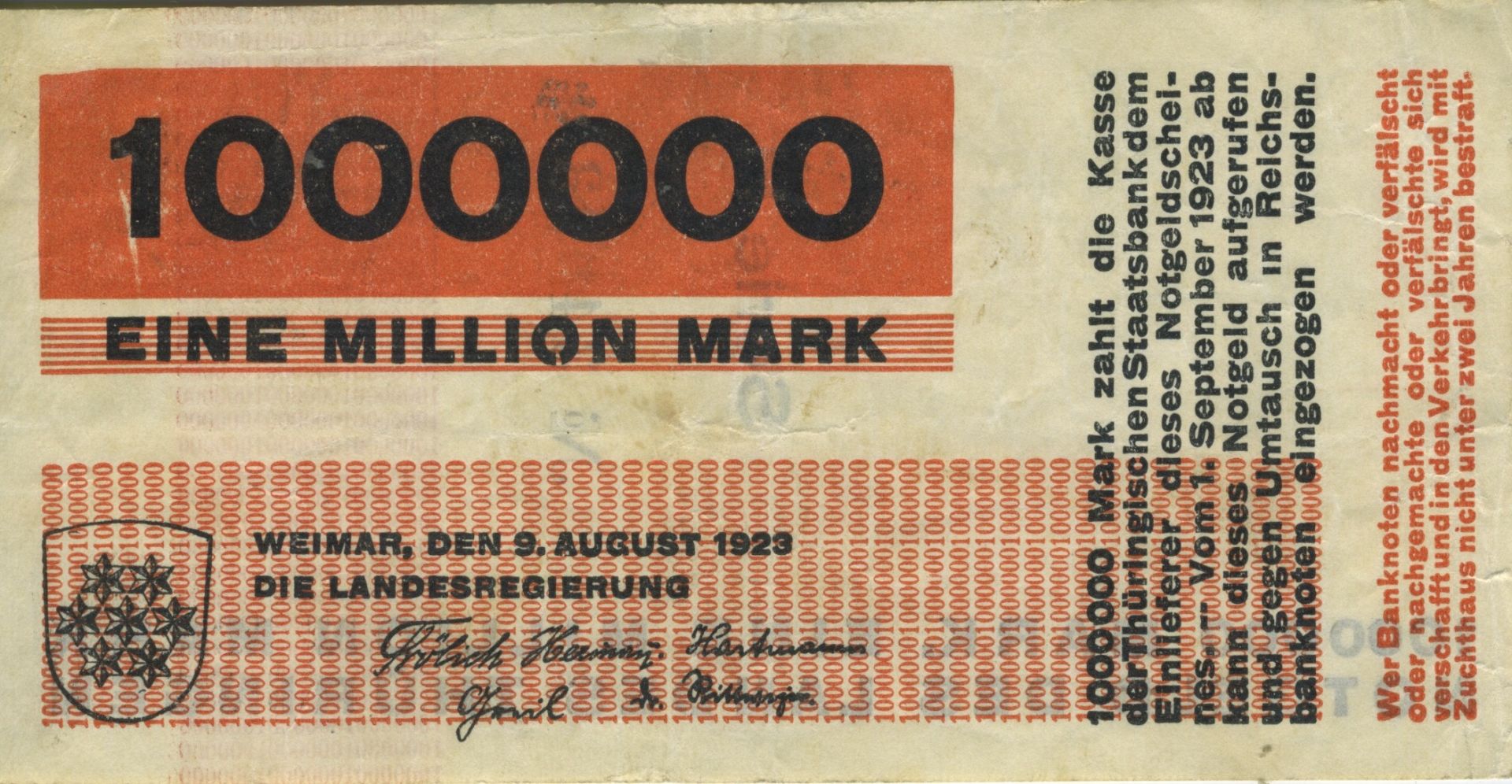Architecture/Photography - 2. view / Display 1
The Bauhaus in Weimar and Dessau
In these two cases and the wall above them we see original and facsimile documents as well as original artworks (including photographs) from the Bauhaus and by Bauhäusler in both its first Weimar venue, and its second home in Dessau. Included are photographs by László Moholy-Nagy, Lucia Moholy, Lux T. Feininger, Hannes Meyer and Werner David Feist, and artworks by Andor Weininger, Fritz Kuhr and Hugó Johan (all items are from a private collection, except for works by Weininger and Feist, which are from the School of Art Gallery Collection). Weininger and Feist were two of only three Bauhausler to end up in Canada after World War II. Among the documents are (left to right): Walter Gropius' Manifest und Programm des Staatlichen Bauhauses, Weimar, April 1919 [Manifesto and Program of the State Bauhaus in Weimar] illustrated with Lyonel Feininger's woodcut Cathedral (1919) on the title page (facsimile: Pavillon-Presse, Weimar, 2002); Walter Gropius' Idee und Aufbau des Staatlichen Bauhauses Weimar [Idea and Realization of the State Bauhaus Weimar] Munich: Bauhausverlag, 1923 (designed by Moholy-Nagy); Herbert Bayer (cover) and Moholy-Nagy (layout), Bauhaus in Weimar 1919-1923, Weimar and Munich: Bauhausverlag, 1923 (facsimile: Lars Müller, Zurich, 2019); the first three issues of bauhaus magazine (nos. 1, 2, 3, 1926-27), edited and designed by Moholy-Nagy (with Walter Gropius) (The Salgo Trust for Education); later issues of bauhaus magazine (1927-31, originals and facsimiles); Herbert Bayer, emergency money of the State of Thuringia, two-toned, printed paper, 1923; Brochure for the Bauhausbücher Series, design: László Moholy-Nagy (M. Szarvasy, New York and The Salgo Trust for Education); Eight of a set of ten postcards issued on the occasion of the Bauhaus Exhibition, Weimar, 1923 (facsimiles: Berlin: Panorama, 2009); and Ernst Kállai, ed., Der Kunstnarr [The Art Nut], no. 1 (April 1929). These objects give a sense of what the institution was like in its conception and in its products (Unless otherwise indicated, publications are from a private collection)
Andor Weininger
untitled (scene with seven figures)
ca. 1929-1935
coloured inks and graphite on paper
21.3 cm x 28 cm
University of Manitoba School of Art Gallery Collection
Gift of the Andor Weininger Foundation
01.033
Photographer: Bill Eakin
Courtesy of the School of Art Gallery, University of Manitoba
László Moholy-Nagy
Lucia Moholy at the Dessau Masters' Residence
1926
silver gelatin print from original negative, authorized edition, 1994
Collection of Oliver A. I. Botar. Photograph by Leif Norman
Lucia Moholy [attr.]
untitled (A woman who may be Elizabeth Vogler performing – perhaps – Gindler Therapy on László Moholy-Nagy)
ca. late 1920s
silver gelatin print from original negative, authorized edition, 1994
Scan by Oliver A. I. Botar
Originally an editor and Life Reform activist, the Czech-Jewish Lucia Schulz (later Moholy), was one of the pioneers of New Vision photography. She was together with Moholy-Nagy from 1920 to 1928. In 1933 she escaped to London and became a successful portrait photographer. During WWII Moholy-Nagy tried, without success, to get her to Chicago to teach at the School of Design in Chicago. Lucia’s friend Elizabeth Vogler and her husband Paul Vogler, both into alternative medicine and therapies, were among the Moholy-Nagy’s closest friends.
Hugó Johan
untitled (female nude)
1922
charcoal on paper
drawn at the Bauhaus, probably for Johannes Itten’s foundation course
Collection of Oliver A. I. Botar
Photograph by Leif Norman
